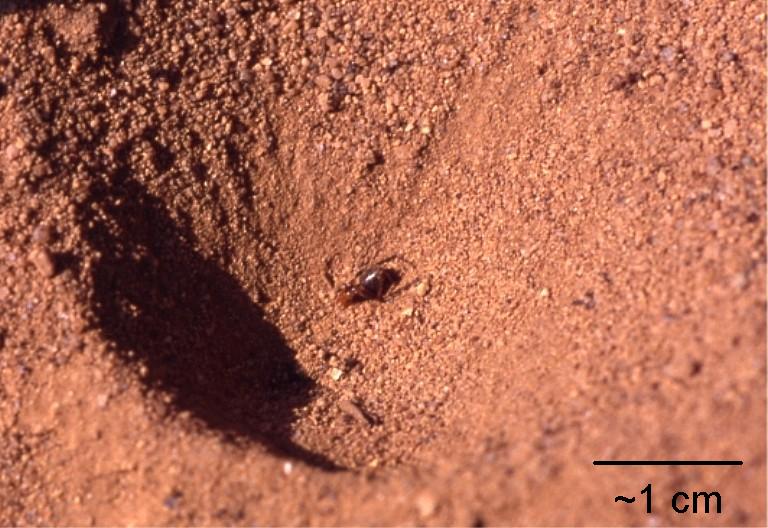Brachynemurus nebulosus is a nearctic species and can be found as far north west as Minnesota and as far south east as Florida. It is most active in the late spring and summer.
Antlions are most known for the cone shaped pits they dig to capture prey. Many species of antlions do, in fact, dig pits in fine sand or dust. The site of these pits is usually a dry area sheltered from rain. These pits can be found at the entrances of caves and under overhanging rocks. As larvae these antlions live in colonial groups and must compete for prey and areas to build their pits.

Image by Christian Fischer
Brachynemurus nebulosus prefers to catch its prey with a different approach. This particular species buries itself in ant mounds waiting for ants to approach. The sand must be dry and between 21 and 50 degrees Celcius, otherwise the larva will stay burrowed beneath the surface . When it identifies prey, B. nebulosus rushes up out of the sand and captures the unsuspecting ant. No other local species under the same genus comes to the surface like the B. nebulosus. This specific behavior allows B. nebulosus to fill a specific ecological niche.
For information on how B. nebulosus has adapted to its environment, visit the Adaption page.

